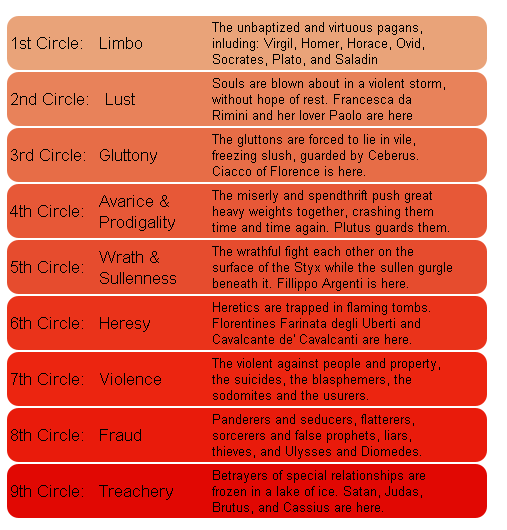
In Dante's Inferno, Hell is a vast underground region consisting of concentric levels each of which is deeper and worse than the rest. Sinners are assigned to the appropriate level to receive eternal punishments tailor made for the sins that they committed on earth. The lower in Hell the sinners' souls sink, the greater and more grotesque the punishment. At the centter of this hell, at the very lowest level, lies Satan who devours the greatest sinners. In both its physical layout and its nature, Hell is the direct opposite of the Paradiso, the Heavenly regions, which lie skyward and whose rewards and blessings increase the farther up one goes, based on how good one was in life.
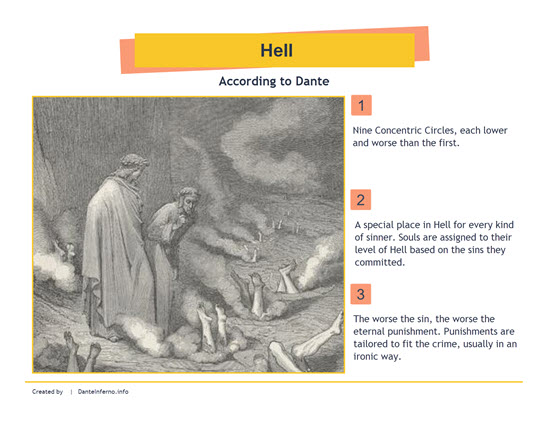
Dante's Hell consists of nine main circles. Each circle of hell, or level, is subdivided into smaller regions devoted to eqquisite punishments for the sinners assigned eternally to that location. Although Dante was influenced by Christian doctrine in his conception of Hell as a place of eternal damnation, he also applied his crfeative vision to invent a hell which was entirely unique and reflected his own concepts and prejudices. The different levels of Hell do correspond somewhat to Christian concepts of sin. For example, Dante conceives of circle of hell devoted to punishing those guilty of murder or theft, both of which are forbidden by the Ten Commandments. But Dante also deviates from a stricty application of the Commandments. His vision of hell conceives of punishments for those guilty of any one of the Seven Deadly Sins, such as laziness or gluttony (overeating), which in today's society would at most be looked upon as personality flaws or even addictions. Furthermore, he ranks the sins differently than in Christian doctrine. For example, the greatest sin according to the Ten Commandments is blasphemy and related offenses against God. In Dante's Circles of Hell, the lowest circle is reserved for the worst sinner, who in his view is the traitor and backstabber, those who used their position or trust or friendship to carry out their crime.
It is another noteworthy feature of this Hell and its circles, that Dante peopled them with both allegorical figures and real people that he knew, as an eternal judgment on their character and worth. Dante made special example of some of hs political opponents such as he Guelphs and Ghibbelines, now forgotten factions in his native city of Florence. It is a testament to the greatness of Dante's art that despite these petty slights against personal enemies, his work stands as a universal work of literature.
It is difficult to visualize the different levels of hell and understand the nature of the sinners and punishments assigned to each. So we have created a visual guide to the different levels or circles of Hell. The images below are drawn from illustrations of the Inferno by Gustave Dore and William Blake.
In Dante's Inferno, Hell is described as having 9 different levels, or circles, each lower than the last. As one descends into the depths of hell, he comes closer to the 9th circle where Satan himself resides. Each level of hell is reserved for different types of sinners, and different punishments are inflicted on the damned depending on the nature and severity of their sin. The greater their sin, the lower the level to which they are condemned to spend eternity.
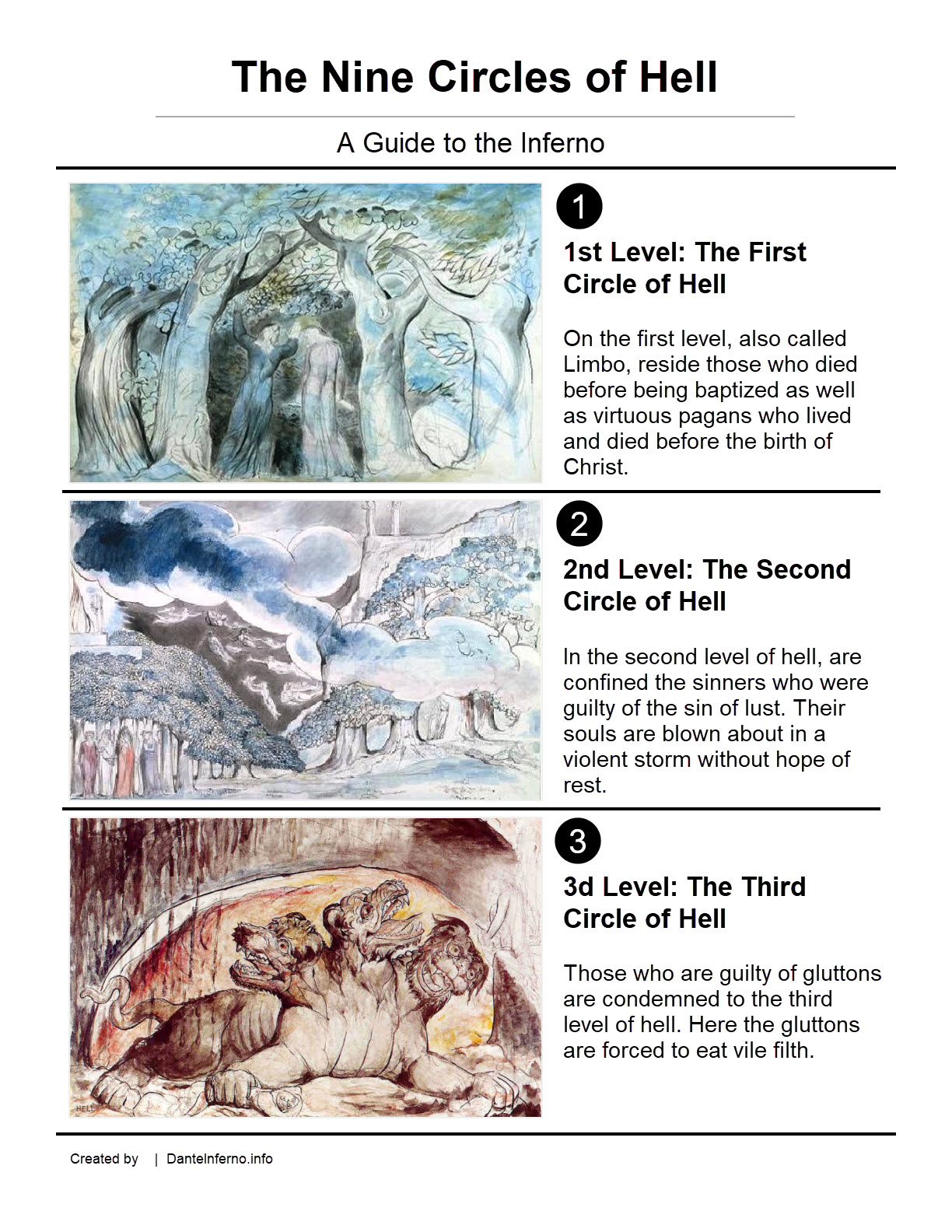
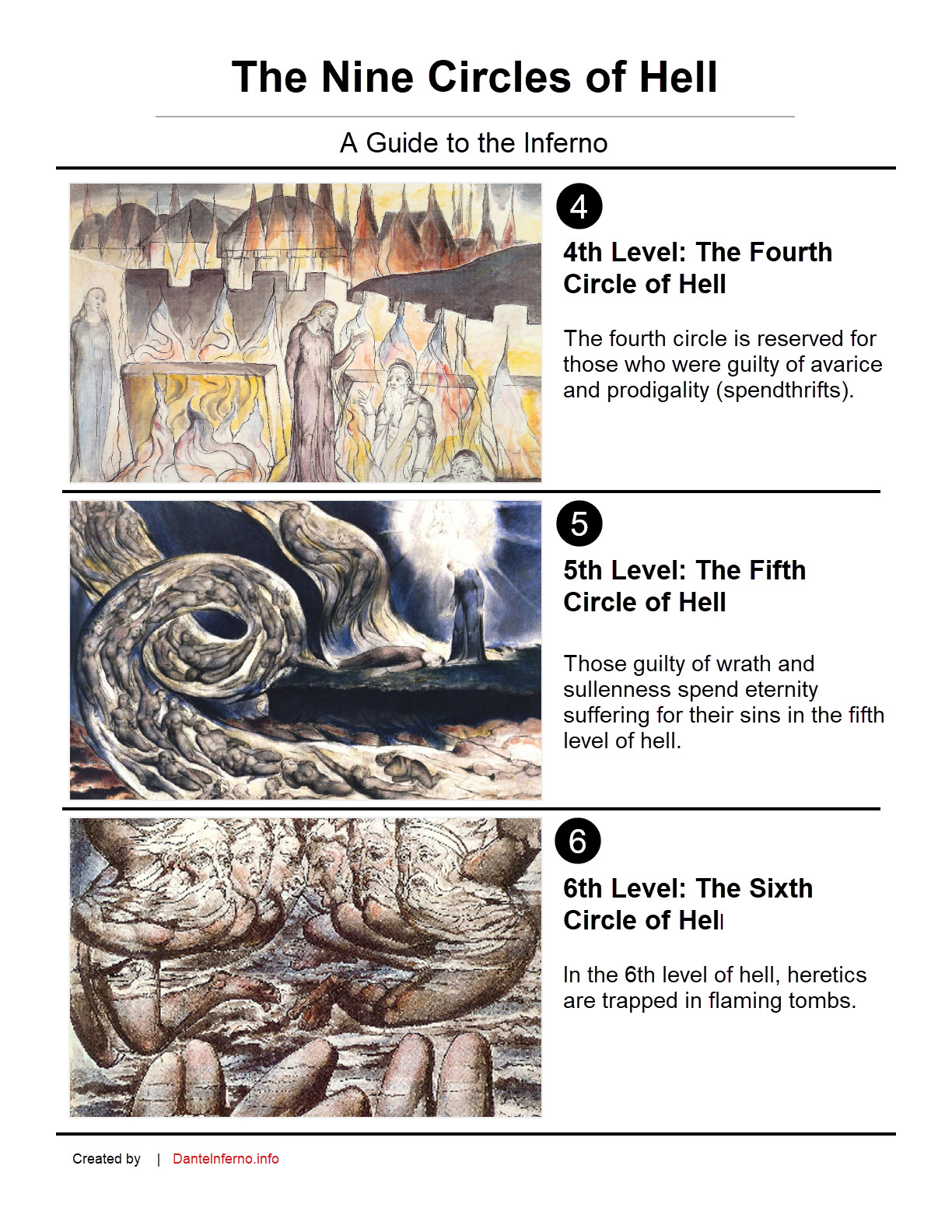
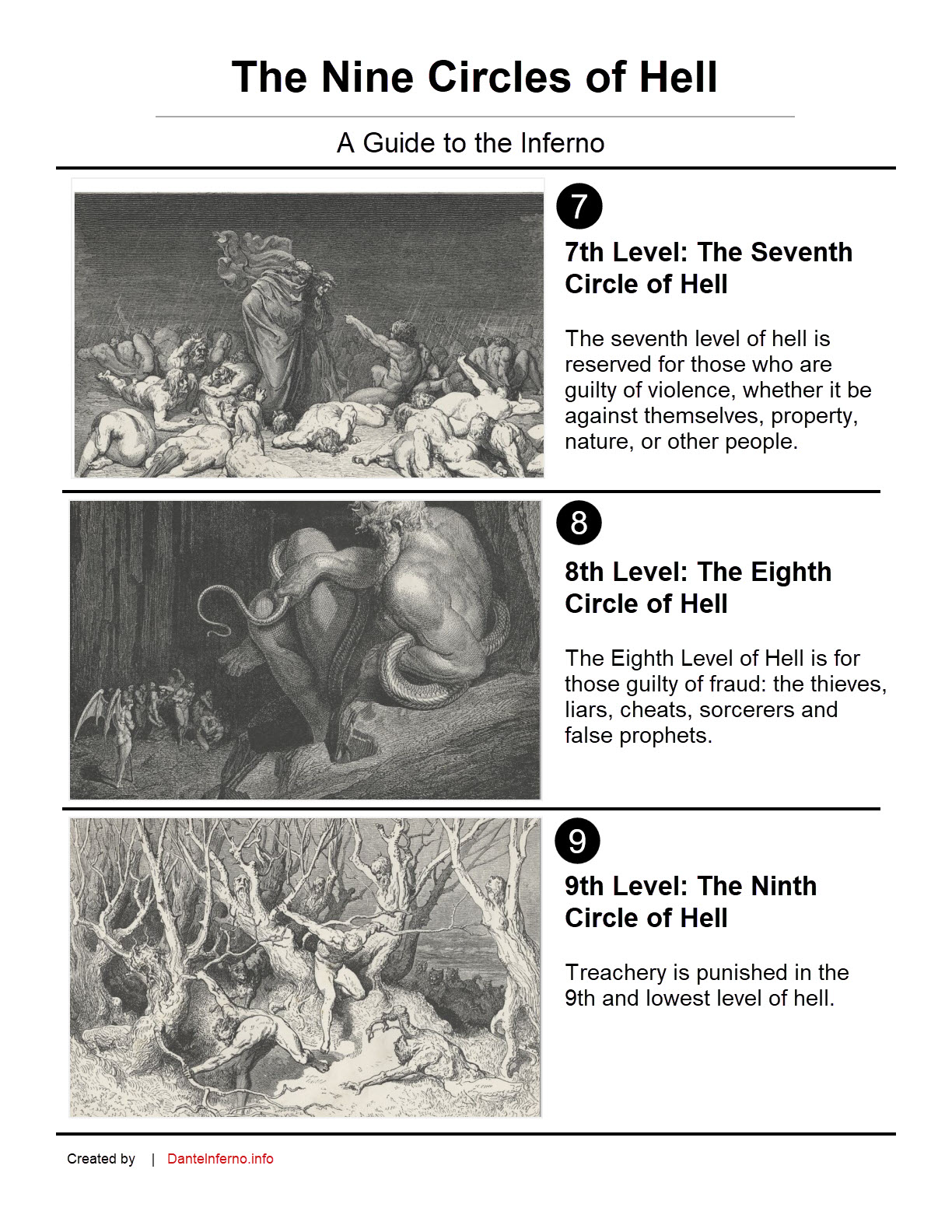
Below is a more condensed, summary guide to the Circles of Hell:
